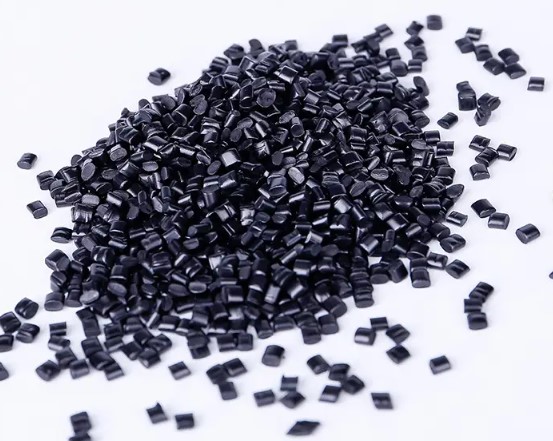Plastics are often considered to have very poor electrical conductivity, which is why they are used to make insulating sheaths for cables. However, scientists have discovered that plastic conductors can be made by mixing plastics with a high concentration of filamentary carbon black and a coking compound. Plastic conductors are the most important class of conductive polymeric materials.
Plastic conductors combine the electrical conductivity of metals with the diverse properties of plastics. To impart electrical conductivity to a polymer, a π-conjugated system must be introduced to form a polymer with overlapping π-electron systems. In addition, the regular structure of the polymer is indispensable and the dopant can be used for this purpose. Thus, the first condition for a plastic material to be electrically conductive is that it has a π-conjugated electron system. The second condition is that it is chemically or electrochemically doped. That is, polymer chains gain or lose electrons through a redox process.

Plastic conductors are usually divided into two main groups:
Structural plastic conductors
Structural plastic conductors are plastics that are inherently conductive in their own right. The conductive carriers (electrons or ions) are provided by the polymer structure. After mixing, the conductivity of these plastics can increase significantly. Some can even reach the conductivity of metals (conductores metales). There are two main types of dopant: chemical dopant and physical dopant. Dopants have electron acceptor, electron donor and electrochemical dopants. Doped polyacetylene is a typical example. After adding iodine or arsenic pentafluoride and other electron acceptors, its conductivity can increase up to 104Ω-1-cm-1. Structural conductive plastics can be used to make high-power plastic batteries, high energy density capacitors, microwave absorbing materials, etc.
Composite plastic conductors
In composite plastic conductors, the plastic itself is not electrically conductive. It only acts as a binder. Conductivity is obtained by mixing conductive substances such as carbon black and metal powders. These conductive substances (sustancias conductores) are known as conductive charges. Silver powder and carbon black are the most commonly used. They play a role in providing carriers in composite plastic conductor. Composite plastic conductors are easy to prepare and have a high degree of practicality. These materials are often used in switches, pressure sensitive components, connectors, electromagnetic shielding, resistors and solar cells.
The use of plastic conductor in applications such as anti-static additives, anti-electromagnetic computer screens and smart windows has developed rapidly. And there is also a wide range of promising applications in light-emitting diodes, solar cells, cell phones, miniature TV screens and even life science research. In addition, the combination of plastic conductors and nanotechnology will also help to promote the rapid development of molecular electronics. In the future, humans will not only be able to greatly increase the speed of computers, but also to reduce their size. As a result, it has been predicted that the laptop of the future could fit in a watch.


